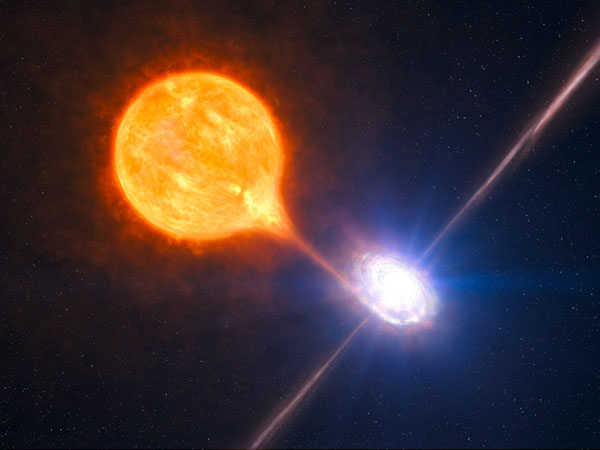Science News
Blowing Bubbles in Space
July 7, 2010

Scientists have discovered a small black hole blowing a large bubble about 12 million light years away from us.
Published in the July 8 edition of the journal Nature, the finding is remarkable considering it was discovered by scientists who were looking at remnants from a supernova explosion.
Microquasars, as these objects are called, are not that uncommon. Universe Today points out that there are a dozen or so in our own Milky Way Galaxy. But the impressive size of this particular bubble, estimated at 1,000 light years across, makes it stand out from the crowd. Most microquasars in our own galaxy are less than 10 light years wide.
According to Universe Today, microquasars are formed by two objects—in this case, the small black hole and a companion star. Energy is produced
by matter falling from one component to the other, and can produce jets of high-speed particles. The fast jets slam into the surrounding interstellar gas, heating it and triggering an expanding bubble made of hot gas and ultra-fast particles colliding at different temperatures.
The jets seen in this microquasar are surprising and may alter the idea of how energy is emitted by a black hole. As New Scientist reports:
These jets are much more powerful than expected for a black hole of this size, blowing bubbles that expand faster than the speed of sound. The finding suggests that more of the energy spent by a black hole goes into accelerating matter-- rather than emitting x-rays-- than previously supposed.
Data in the form of x-ray emissions were gathered from both the European Southern Observatory and the Chandra X-ray Observatory in the study. Giant bubble-blowing black holes like this microquasar may help scientists better understand differences between black holes of different sizes—including the ones that lurk at the centers of most galaxies like our own.